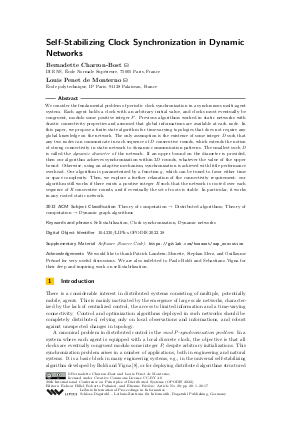LIPIcs.OPODIS.2022.28.pdf
- Filesize: 0.67 MB
- 17 pages

 Creative Commons Attribution 4.0 International license
Creative Commons Attribution 4.0 International license























Feedback for Dagstuhl Publishing